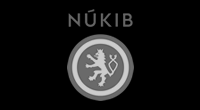 Artificial intelligence (AI) is becoming an increasingly significant part of our daily lives. Technologies utilizing AI can be found in our mobile phones, computers, internet search engines, social networks, and even in household appliances. We also frequently encounter AI-generated products—articles, images, photographs, or videos—on the internet.
Artificial intelligence (AI) is becoming an increasingly significant part of our daily lives. Technologies utilizing AI can be found in our mobile phones, computers, internet search engines, social networks, and even in household appliances. We also frequently encounter AI-generated products—articles, images, photographs, or videos—on the internet.
Unfortunately, AI can create content that may be dangerous for us, such as so-called deep fake videos, which can mislead us and prompt hasty reactions (e.g., investing a large amount of money under the illusion of miraculous wealth promised by a well-known personality). The only defense against these risks is continuous improvement of media literacy for internet users—both the younger generation and older generations. And it is precisely the latter that the newly released publication targets.
The E-Bezpečí project at the Faculty of Education of Palacký University in Olomouc, in collaboration with CEDMO (Central European Digital Media Observatory) at Charles University, has just published a thematic handbook titled Risks Associated with Artificial Intelligence for Seniors.
The handbook offers a comprehensive view of artificial intelligence, its applications, and potential risks. It explains basic concepts and principles of AI, describes its benefits and practical applications in everyday life, such as in healthcare, education, or entertainment. It also highlights possible dangers, such as internet fraud, misinformation, deep fake videos, and privacy breaches.






Risks Associated with Artificial Intelligence for Seniors
“The virtual world in recent years is literally infested with dangerous content, including various types of online scams that exploit artificial intelligence,” comments the publication's main author prof. Kamil Kopecký from the Faculty of Education of Palacký University in Olomouc and continues: “Thousands of people are losing their savings by investing in 'guaranteed' investment products, where a well-known personality (perhaps the president, former prime minister, famous actor, or singer) speaks to them via deep fake videos and promises easy wealth. However, it's just a scam, fiction, and the result is enormous financial losses. The only way to become resilient to these risks is systematic education and increasing media literacy among the population. And that is exactly what our new publication is aimed at.“
Anja Grabovac, project manager at CEDMO, adds: “The majority of the Czech population does not yet use generative AI tools. According to our CEDMO Trends survey, three-quarters of the Czech population over the age of 16 do not use generative AI tools at all. We also know that there are significant discrepancies between age groups; while only a third of younger respondents report not using generative AI tools, this figure rises to 94% among those over 65. Similar differences were observed regarding awareness of the deepfake phenomenon, where only about a third of respondents over 65 correctly identified deepfakes as seemingly real AI-generated images, videos, or sounds that do not correspond to reality. The survey also highlights significant gender differences in understanding deepfakes, with half of the men surveyed answering correctly, compared to 32% of women.”


In addition to deep fake videos and online fraud, the handbook also addresses the issue of deep nudes, so-called undressing apps, which are a highly dangerous trend—AI integrated into web or mobile applications allows anyone to generate a nude photograph from a regular photo. This can then be misused for blackmail, threats, etc.
The handbook also provides practical tips and recommendations on how to protect against AI misuse and offers an overview of useful applications and tools for the safe use of this technology. In conclusion, it provides contacts to organizations that can offer assistance in case of problems.
The handbook in Czech language is available for free download on the websites of E-Bezpečí and CEDMO
(it is also published in a limited print run).































